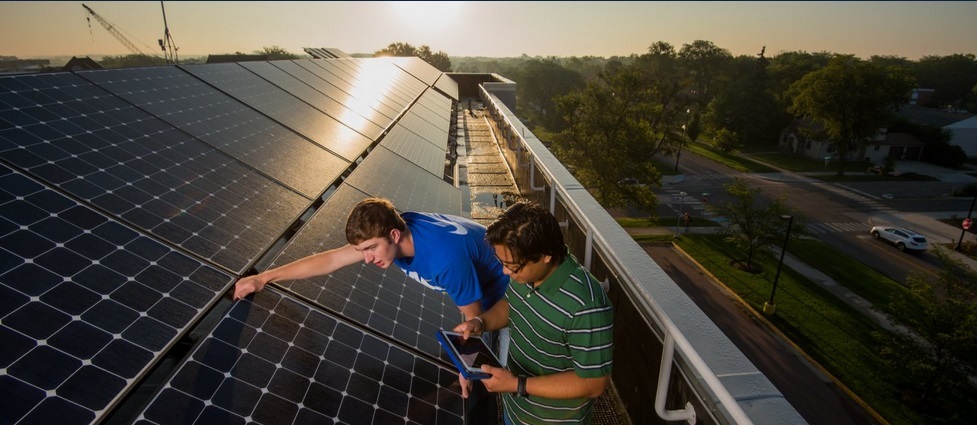.png)
Program Coordinator/Contact
Sungyong Jung, Department Head
McComish Department of Electrical Engineering and Computer Science
Daktronics Engineering Hall 214
605-688-4526
Program Information
Electrical engineers play key roles in solving technical problems in many areas including biomedical engineering, communications, computers and digital hardware, electronic materials and sensor devices, image processing, control systems, alternative energy and power systems.
The program begins the first year developing a strong foundation in mathematics, science, and communication. Unique to SDSU, the EE program boasts a first semester introductory hands-on lab experience followed by a first course in linear circuits and lab in the second semester. Following this are two intensive years of study in circuits, energy conversion, electronics, signal, systems and control theory, electronic material and devices, digital and microprocessor systems. The junior and senior years include courses that cover the breadth and depth of the field. During their senior year, students will select a specialization and take technical electives in their chosen area. The capstone of the program is Senior Design I and II, a two-semester sequence taken in the senior year that places every student on a team that designs, builds, tests, and demonstrates a significant electrical engineering project (typically industry sponsored), which 1) incorporates appropriate engineering standards and multiple constraints, and 2) is based on the knowledge and skills acquired in earlier course work; students also take a Project Management and Engineering Economics course that supports this sequence. The projects are developed in collaboration with SDSU researchers or industry and provide students valuable “real world” team design experience.
Accreditation
The Electrical Engineering (BS) program is accredited by the Engineering Accreditation Commission of ABET, under the General Criteria and Program Criteria for Electrical, Computer, Communications, Telecommunication(s) and Similarly Named Engineering Programs.
Certification and Licensure
Upon successful completion of both the Electrical Engineering curriculum and the Fundamentals of Engineering (FE) exam, and five years of engineering work experience under a professional engineer (PE), the student is allowed to take the PE exam to become a licensed PE.
Course Delivery Format
A majority of the courses are taught on campus in smart classrooms. A significant number of courses have an associated lab component that strengthens students’ hand-on practical experience. The smart classrooms allow for a variety of methods for student engagement and faculty are able to record and post their lectures online.